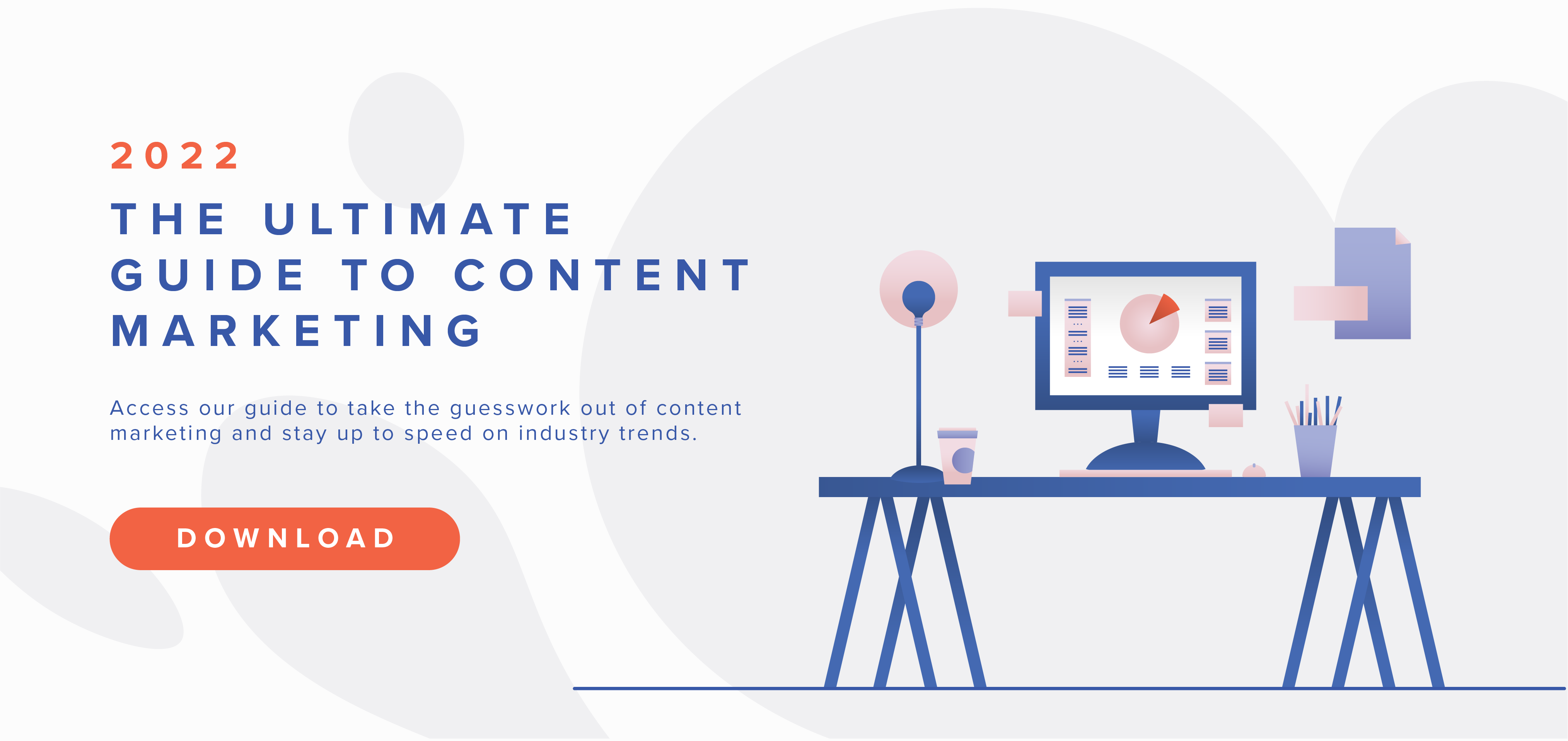But First, the Brass Tacks…
Although content marketing has both B2B and B2C applications, there are a few differences between the two spaces that are worth discussing. For one thing, B2B marketing tends to take longer. That’s because getting a B2B sale across the finish line often requires more consideration and approval from multiple stakeholders. It’s not uncommon for B2B buyers to require proof of return on investment before they’ll sign on the dotted line — and for good reason.
When a B2B buyer makes a decision, that choice doesn’t just impact them in their role. Rather, it has a ripple effect across the entire organization. That added pressure means buyers rely on logic and facts, not emotion, to make important buying decisions. They want to know how your product or service will save them time, capital, and headaches, and they use thought leadership content to figure that out. Indeed, 63% of B2B buyers use educational content to decide whether an organization can address their business’s unique challenges.
Unlike the one-to-one relationships B2B marketers build with company decision-makers, B2C marketers often target a large pool of general consumers. As a result, B2C marketing is more transactional in nature. That’s not to say you don’t have to build relationships with B2C buyers — just that consumers are less likely to spend hours trying to understand why they should invest in your offering. If they can’t find the answers they seek in five minutes or less, they’re more likely to move on to the next company.
That’s why so much B2C marketing involves simple, easy-to-understand messaging with a clear value proposition. Consumers want variety, convenience, and personalization at scale. And though they want to know that your offering will improve their lives somehow, they’re not necessarily looking for the concrete numbers that B2B buyers require because they’re not beholden to a C-suite.
3 Content Marketing Lessons for B2C Marketers
With those key differences in mind, here are three lessons B2C marketers can take from B2B-style content marketing.
1. Invest in your target audience earlier.
In B2C marketing, you often see ads that are meant to prompt consumers to hit the “buy now” button as quickly as possible. But what about the consumers who aren’t yet ready to buy but could be with a bit of encouragement? That’s where a B2B content marketing approach can be beneficial. Instead of catering only to consumers who are at the decision stage, create thought leadership content that engages your target audience earlier in their journey.
This content will look different depending on your offering. For example, if you’re an outdoor lifestyle brand, you might publish a guide on the country’s best hiking trails and include outdoor gear recommendations for each location. Doing so will engage those top-of-the-funnel folks who, at this point, just want more information. And once they’ve decided to pull the trigger on one of those hikes, they’re more likely to stock up on your gear.
Online home goods store Public Goods offers an example of B2C content marketing in action. In addition to its product photos, it also shares a monthly in-season produce guide. This thought leadership strategy not only makes sense for Public Goods’ brand, but also positions the company as a helpful resource.
2. Lead and connect with education.
As we already discussed, education is critical to any successful B2B content marketing strategy. B2C companies should take note. After all, the vast majority of consumers do not trust traditional advertising, and a whopping 83% of consumers will ditch any brand they deem opportunistic. Thankfully, content is one of the best trust-building tools in a marketer’s arsenal.
So start creating persuasive content that shows target consumers how your product or service will improve their lives. Don’t be afraid to get creative, and make sure there’s a good variety (e.g., blog posts, guest articles, infographics, checklists, quizzes, videos, social media posts, emails, etc.). No matter what type of content you create, however, it must be educational in nature.
B2B content marketing works so well because it’s focused squarely on solving the customers’ pain points. If you’re authentically helpful, the sale will come naturally when the consumer is ready. For example, capsule clothing and lifestyle brand Carly Jean Los Angeles uses its blog to cover topics ranging from fashion to cooking to party planning. Though the brand’s ultimate mission is to sell more clothes, the content doesn’t exist just to push products. As a result, CJLA comes across as more authentic and helpful.
3. Marry paid efforts with organic customer acquisition.
In this digital-first world, many companies — especially B2C — rely heavily on paid advertising. But if you’re a small to midsize company, that’s not always financially feasible. So it’s important to match your paid strategy with organic customer acquisition.
Paid efforts help keep your pipeline full, but building a complementary content marketing strategy that drives organic and referral traffic back to your website is more cost-effective. And if you have a variety of calls to action, you can capture an even larger audience than those coming for transactional purposes.
For an example, look no further than Artifact Uprising. If you Google “how to take good phone photos,” one of the brand’s blog posts appears on the first page of search results. This article answers a common question that’s directly related to Artifact Uprising’s offering. And even though it’s not pushing a sale (at least, not right away), it’s still a great way to get the brand in front of more people. All told, the brand broadens its reach without having to pay for ad space.
Content marketing has often been considered a B2B play, but it also works well in the B2C space. B2C marketers can (and should) study B2B-style content marketing strategies to see how they can use the same approach within their own four walls.






.jpg?width=650&height=366&name=iStock-1455181699-min%20(1).jpg)

)
